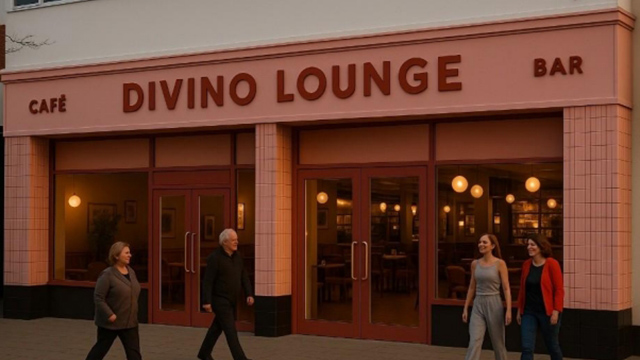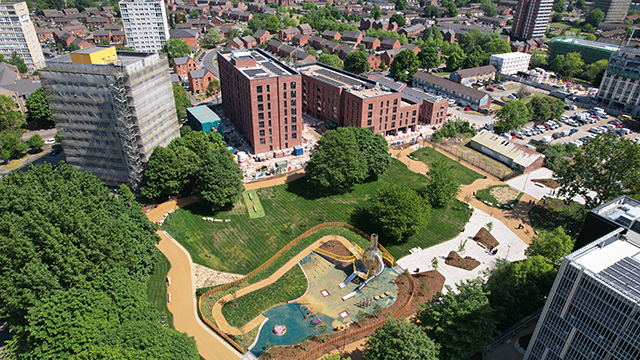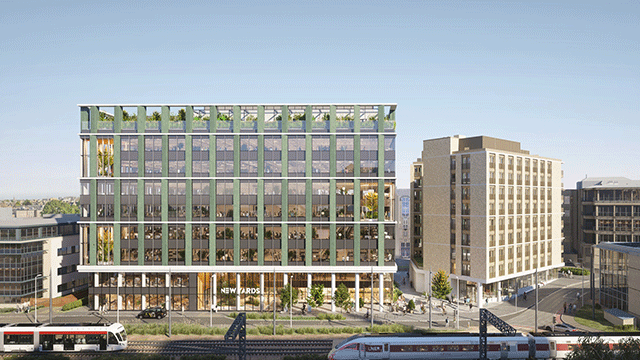The number of completed build-to-rent homes in the regions is nearly on par with London totals, with current levels standing at more than 14,600.
It is the first time on record that regional markets have mirrored totals in the capital, as BTR expands into Manchester, Birmingham and the wider Midlands.
Since the BTR revolution has taken off in the UK, developers have completed 14,801 homes in London, compared with 14,615 in other parts of the country, new data from the British Property Federation produced by Savills shows.
These figures are a snapshot based on data collected at the end of the fourth quarter of 2018.
In total, 139,508 homes were either in planning, under construction or completed at the end of the year.
This an increase of 24,702 homes from the same time the previous year, with the largest increases relating to the number of homes currently under construction (up 39%). Completed homes rose by 29%, with an additional 10% currently in planning.
Increases in the regions and product diversification, as established investors and operators spread their wings and local authorities embrace BTR, look set to drive the sector this year.
Regional drivers
Overall, there are 72,767 BTR homes in London in planning, under construction or completed, compared with a combined 66,741 in other cities. Manchester and Salford now have 23,432 BTR homes, with 5,583 in Birmingham and 5,038 in Leeds.
The regions are on track to overtake London’s completed BTR figures, with a larger number of units currently under construction – some 24,070 compared with 19,304 in London.
“Pricing in London is more challenging; that is one of the drivers of it,” says Alex Greaves, UK residential fund manager at M&G. “There are some of us that have been doing this for a while and already have an exposure in London, which means it pays dividends for us to go elsewhere.”
Helen Gordon, chief executive of Grainger, also points to the challenge of securing sites in London and increasing opportunity in the regions, and says some regions recognise the need for BTR. “One of the key things for the country is productivity – if they have a good BTR sector, they are likely to attract and retain young people.”
This has resulted in a rise of large regional portfolios from short-term investors, many of which include built assets, such as Dandarda’s £400m portfolio spread across Birmingham, Manchester and Leeds.
Neil Young, chief executive of Get Living, says: “We set out the areas we wanted: London, commuter areas into London and then the main regional cities. Then we started looking – some of the regional cities from a planning perspective are pretty good to engage with.”
Established investors and operators moving into the regions offering BTR at scale are attractive to local authorities looking to partner with long-term investors. Notable regeneration projects – including London’s Wembley and Silvertown, and Birmingham’s Smithfield – have all included 1,000+ homes earmarked for BTR.
Greaves adds: “The vast majority of schemes being built in those large regional opportunities will be for rental, whereas the vast majority in London will be for sale. They are quite opposed.”
He lists Edinburgh, Birmingham and Leeds as cities that M&G will seek to expand into this year, as well as growing exposure in London.
“The for-sale market is struggling. As a result of that we’ll see less competition from the housebuilders, and that will make expansion easier.”
This could also result in further growth in London, with less competition from housebuilders, as well as an uptick in partnerships. M&G has already partnered with Crest Nicholson, Telford Homes and Redrow, among others, and anticipates further future collaborations.
Almost half of these BTR homes, some 66,718, are currently in planning stages and have yet to begin construction.
The bulk of these (47%) have been granted detailed planning permission, with a large proportion of schemes earmarked for BTR still in pre-planning stages (34%).
Ian Fletcher, director of real estate policy at the BPF, points to the revised National Planning Policy Framework, asking local authorities to identify the number of rental homes they require, as encouraging for BTR.
“This has never before been enshrined in UK planning policy and will only add to the growing number of local authorities that are seeing the benefits of build-to-rent in adding much-needed housing supply across the UK.”
Jacqui Daly, director at Savills residential investment research and strategy, adds: “Changes to planning will make it much easier to get bespoke developments off the ground, which will match investor demand for sizeable portfolios offering long-term income streams.”
Daly says permitted development rights previously “provided an easy springboard” for BTR, but she notes that future at-scale schemes will not be possible by converting existing buildings.
BPF and Savills analysis of PD in London reveals just 13% of homes have come via this route, and just 5% of London’s home are currently pre-construction PD, suggesting a decline conversions amid a rise in purpose-built rental as local authorities and developers increasingly earmark homes for rental.
Looking to the future
Greaves says: “The numbers are very positive, but it’s a drop in the ocean compared to what is required.”
He says the largest barrier for investors is pricing. “That could be a combination of land value aspiration, build costs and rents not sustaining.”
Gordon agrees: “The clue is in the incremental planning, which is up 10% on last year, showing the amount that is coming into the planning process. That is about land supply and the ability to get things to planning.”
Young adds: “It’s still quite fine margins from a financial perspective; that’s always going to be a challenge. It’s not a silver bullet – you have to use experience to run it in the right way that works for the customer and the investor.
“ I’ve always compared us to the student sector, and I think it will become an investment class in the way that student is. I just think that will increase – we’re still quite early in its formation, and you’ve still got the pioneers who are pushing it through.”
But there will always be buyers looking to pick up new schemes. As house price growth tanks around Brexit, the BTR market is an increasingly attractive asset class for long-term investors.
“Compared to some of the other sectors, we continue to see good rental growth in the sector. And we are definitely starting to see the differentiation between a professional landlord and the non-professional, making choice of landlord become part of the choice of where they live,” says Gordon.
As the rental market grows and evolves with the reduction of buy-to-let landlords, the result is a “professionalisation” of the sector, says Gordon. “That’s got to be a good thing for housing.”
To send feedback, e-mail emma.rosser@egi.co.uk or tweet @EmmaARosser or @estatesgazette











